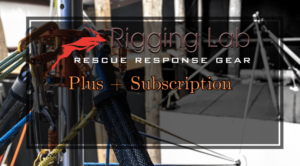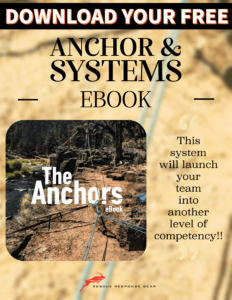Advanced Rope Rescue Systems: The Multi-Purpose Device Revolution
The Multi-Purpose Device Revolution is an ever-evolving world within technical rescue; innovation is key to enhancing safety and efficiency. As we explore the intricacies of dual tension dual capacity (DTDC) systems, it’s crucial to highlight the game-changing equipment that makes these advanced techniques possible. At the forefront of this technological revolution is the Multi-Purpose Device (MPD), a tool that has redefined the possibilities in rope rescue operations.
The MPD: A Paradigm Shift in Rescue Equipment
The MPD represents a significant leap forward in rescue technology, combining multiple functions into a single, efficient device. Its design addresses many of the challenges faced by rescue teams in complex scenarios, offering a solution that is both versatile and user-friendly.
Key Features and Benefits:
- High-Efficiency Pulley: At its core, the MPD boasts a high-efficiency pulley system. This feature alone significantly reduces the effort required in hauling operations, with efficiency rates reaching up to 95%. This translates to less fatigue for rescuers and smoother operations overall.
- Integrated Rope-Grab Mechanism: The MPD’s built-in rope-locking mechanism (ratchet) allows it to function seamlessly as both a lowering device and a hauling system. This integration eliminates the need for additional progress capture devices, streamlining the rigging process.
- Versatility in Function: Perhaps the MPD’s most revolutionary aspect is its ability to serve multiple roles without hardware changes. It can function as:
- A variable-friction descent control device
- A high-efficiency raising system
- A belay device
- Built-in Becket: This feature allows for cleaner rigging and more efficient pulley systems, enhancing the device’s versatility in complex setups.
- Rapid Conversion: The MPD shines in scenarios requiring quick transitions between lowering and raising operations. This is particularly valuable in confined space rescues where time is of the essence.
Enhancing DTDC Systems with the MPD
When incorporated into dual tension dual capacity systems, the MPD elevates the capabilities of rescue teams:
- Mirrored Rigging: The MPD allows for main line and belay line rigging to be mirrored or twin-tensioned, a key component in effective DTDC setups.
- Simplified Changeovers: In DTDC systems, the ability to quickly switch between lowering and raising is crucial. The MPD facilitates these changeovers without the need to reconfigure the entire system.
- Reduced Complexity: By combining multiple functions into one device, the MPD significantly reduces the number of components needed in a DTDC system. This not only lightens the load for rescuers but also simplifies the rigging process.
Safety and Efficiency: The MPD Advantage
The integration of MPDs into rescue operations brings numerous benefits:
- Reduced Weight: Fewer pieces of equipment mean a lighter load for rescue teams to carry.
- Faster Rigging: With multiple functions in one device, setting up rescue systems becomes quicker and more straightforward.
- Simplified Training: The versatility of the MPD allows teams to standardize their equipment and procedures, streamlining the training process.
- Lower Risk: By reducing the number of components and simplifying operations, the MPD helps minimize the potential for errors in high-stress situations.
Practical Applications in DTDC Systems
In a DTDC setup, MPDs can be used on both sides of the system, providing symmetrical control for lowering and raising operations. This symmetry is particularly valuable when fine control is needed, such as navigating a litter through complex terrain or around obstacles.
For example, in a cliff rescue scenario using a DTDC system:
- Two MPDs can be set up on the main lines, one for each rope pair.
- The devices can be quickly switched between lowering and raising modes as needed.
- The built-in efficiency of the MPDs reduces the physical effort required by the rescue team, allowing for longer operations with less fatigue.
The Future of Rope Rescue
As we look to the future of technical rescue, devices like the MPD point towards a trend of multi-functional, highly efficient equipment. This evolution in gear design complements the advancement in techniques like DTDC systems, creating a synergy that enhances both safety and capability in rescue operations.
Conclusion
The integration of tools like the Multi-Purpose Device into advanced rigging techniques such as dual tension dual capacity systems represents a significant step forward in the field of technical rescue. By simplifying equipment needs, enhancing efficiency, and providing versatile functionality, the MPD empowers rescue teams to tackle increasingly complex scenarios with greater confidence and capability.
As rescue professionals continue to push the boundaries of what’s possible in technical rescue, the combination of advanced techniques like DTDC and innovative equipment like the MPD will undoubtedly play a crucial role in saving lives and enhancing safety for both rescuers and those they aim to help.
Peace on your Days
Lance










